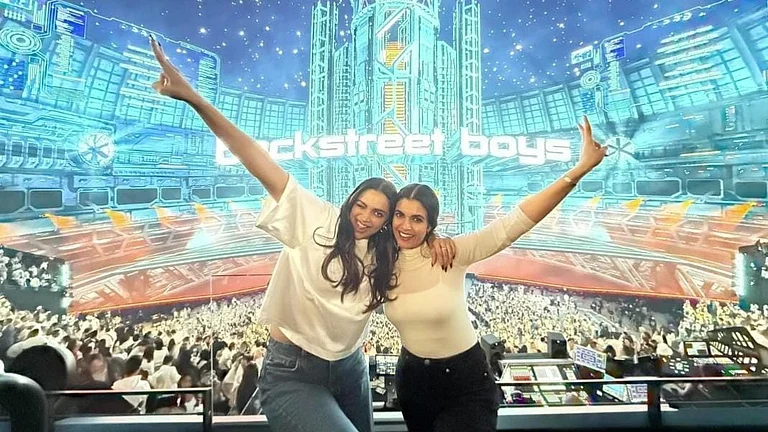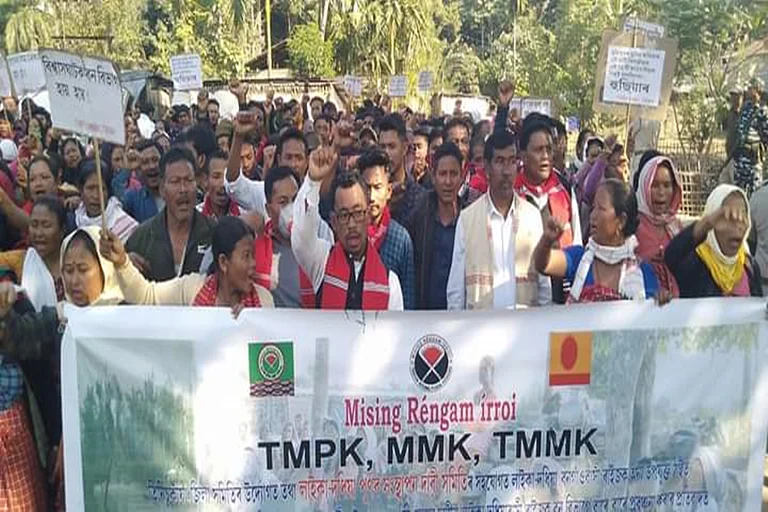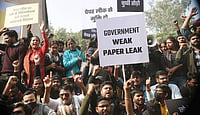As I walked from my apartment towards the main road to catch an auto, I could see the banyan tree. On a bright yellow afternoon of Ahmedabad in September, the giant green was soothing to look at. As I turned right, I expected to see him. The cobbler. Sitting beneath the banyan tree. Like always. He wasn't there. His black box was missing too. It was strange. I stopped for a moment. For as long as I can remember, locked in my memory is the image—that of the cobbler sitting beneath the banyan tree. The empty space was an aberration. It was an incomplete image. As I was rushing to go to the bank, I sat in an auto and left, but his absence stayed with me for some time. Maybe he took a day off. The next day, too, he wasn't there. The last time I saw him was when I visited home in the summer. It was July.
I had to ask around. I walked up to the small post office close by. No one had seen him for a while. “Gaya shayad. (Maybe he has left for good),” said the lady at the post office, without looking up, while performing the mundane task of stamping a bunch of letters. It didn't matter to her. His presence or absence. But it did to me. We shared a strange emotional bond. A very strong human-to-human connection.
I was about 10 when I first saw the cobbler. One fine day, he made the empty space beneath the banyan tree his workstation. I was walking to the market, holding my mum's hand, when his presence was noticed. His broad face, big eyes and the slightly twisted hand with which he was mending shoes were strange and intimidating. He was a big man. Tall and burly. Not the kind of stranger you should smile at or interact with, as was told to us. So, for a very long time, while crossing the banyan tree—which we had to at least two-three times a day as it doubled up as an auto stand and also led to the main road—I saw him, but never looked at him. In my head, I would always weave stories, about things and people around me. In those stories, he was always the bad person.
He was always there though. Even on Sundays. There was something strangely intriguing about him. He would smile and wave at all those who passed by. I would ignore him. On days, I had to walk the deserted and not-so-well-lit stretch all alone, I would rush while crossing the banyan tree. My younger self was scared of both, the banyan tree which we—the children in the neighbourhood—were convinced was haunted, and the “pagal mochi” sitting beneath it.
Perception about him changed on a rainy afternoon. The broken zip of a travel bag needed to be repaired. It was urgent as the train was in the evening and going to the market on a rainy day to buy another bag wasn't feasible. I volunteered to go. I was looking forward to meeting the cobbler, who that day, was sitting under a big black umbrella. He smiled broadly. His speech was unclear, and he communicated mostly with hand gestures. I could also sense that he was suffering from some mental illness; hence the name “pagal mochi”. He was harmless though. And kind. Also very sincere, diligent and hard-working. I was impressed with the way he mended that broken zip despite the disability in his left hand. That was our first rendezvous.
Since that day, the cobbler sitting beneath the banyan tree became an integral part of my growing-up years. I never went to him again with damaged shoes or broken zips. But we became “friends”. We smiled at each other every time we “met”. There was no need for any communication. It was just a pure human-to-human connection.
Seasons changed; years passed by. While I went through the usual rigmarole—primary, secondary, higher secondary and graduation—the cobbler also showed signs of gradual ageing. But his presence was comforting; especially at a time when life was changing at a fast pace. It was on a fast-forward mode. The transition from school to college is exciting, but also scary.
The day I left for Pune for higher studies, I saw him for the last time. It was a taken-for-granted fact that after post-graduation, I would move to a metro city and look for employment opportunities. It meant never returning; but only visiting home. Home was all set to become alien. The departure was heartbreaking.
Even more heartbreaking were the subsequent years. While I was making different rented accommodations in Mumbai my home, it was strange to visit “home” after a few years. Everything had changed. The city was becoming more and more modern, it didn't feel like mine; friends who mattered had moved out—for studies, for work, for marriage. It took a while to accept that nothing is permanent, and amid such emotional turmoil, among the few things that were still unchanged was the banyan tree and the cobbler sitting beneath it. There was a strange comfort in smiling and waving at him during my not-so-frequent visits. It was a precious part of my past that was still present.
Then came the pandemic. While working on stories on the plight of migrant workers and the impact of the virus on our mental health, I, for the first time, thought exclusively about my cobbler friend. What is his story? What is his name? Where is he from? Where is his family? Does he even have one? I was very convinced that like so many others, the covid virus would eat up his job; that he would pack up and go; that he would not be sitting beneath the banyan tree when I would visit home post pandemic.
But there he was; very old and very tired but sitting right there where he belonged. We survived the pandemic; me quite literally. Being stuck in an alien city all alone and seeing oxygen level dip to 60 at night isn’t a nice feeling. But that’s a story for another day. Given the section of society he came from, his survival was a bigger win.
There were so many occasions when I could have simply walked up to him and asked his story. But I didn't. I liked the mystery. I liked the unknown. What I should have known though was that even this wasn't permanent. That someday, he would go, or move, or die. It happened, and it made me feel broken and empty.
In September, while going to the airport, I looked at the banyan tree. I stared hard at the empty space. It shall remain empty forever. But there is hope. That probably he has gone back to his village after years of toiling. That probably he is with his family now; family that will take good care of him. As for me, I will miss my anonymous cobbler friend. I have locked the image of the cobbler sitting beneath the banyan tree in my memory. It will stay there forever.




























